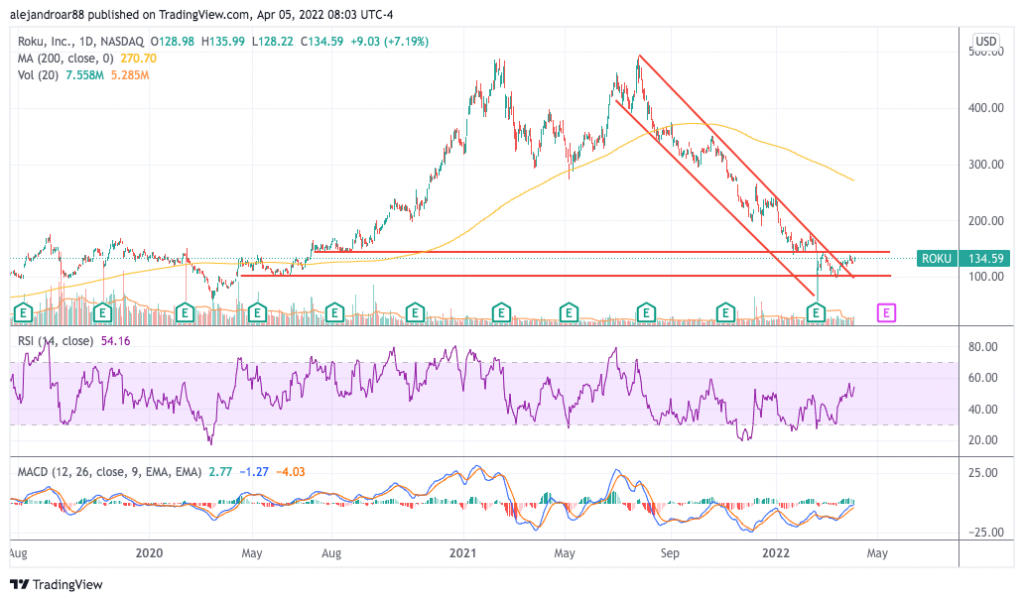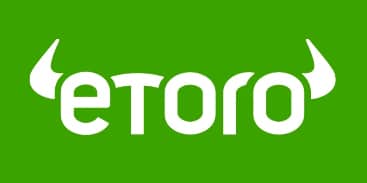Roku Stock Up 7% in April – Time to Buy ROKU Stock?
Please note that we are not authorised to provide any investment advice. The content on this page is for information purposes only.
The price of Roku stock is advancing more than 7% so far this month following news that the company extended its agreement with Amazon to keep offering access to Prime Video through its devices.
In a brief press release published yesterday, the video streaming business informed that it reached a “multi-year extension” of its agreement with the e-commerce giant, ensuring that customers will continue to enjoy access to both Prime and IMDb TV. The financial terms of the agreement were not disclosed.
Roku’s partnerships with content providers including Disney+, Netflix (NFLX), Amazon (Prime Video), and YouTube (Alphabet) are crucial for the company as users rely on its dongles to turn their old TVs into smart devices.
Investors reacted positively to the company’s extended agreement with Amazon as shares jumped 7% yesterday after the news.
Last month, Roku expressed its intention to raise capital by offering different types of securities including Class A common shares, preferred shares, debt securities, and warrants.
What could be expected from this video streaming stock after these interesting developments? In this article, I’ll be assessing the price action and fundamentals of Roku stock to outline plausible scenarios for the future.
67% of all retail investor accounts lose money when trading CFDs with this provider.
Roku Stock – Technical Analysis

The price of Roku has been on a sharp downtrend since July last year as the market adopted a cautious view about the company’s future as the tailwind provided by the pandemic is expected to partially fade.
Moreover, the risk-off move prompted by an expected change in macroeconomic conditions and an escalation in geopolitical risks amid the armed conflict between Russia and Ukraine contributed to depressing the valuation of early-stage companies such as Roku.
Thus far, the price of the video streaming stock has declined almost 18% in 2022 and remains 72.6% below its 52-week high and 50.3% below its 200-day simple moving average.
Yesterday’s volumes slightly exceeded the 10-day average and the price action led to a break of the descending price channel in the chart.
Momentum indicators appear to be favoring a short-term bullish outlook as the Relative Strength Index (RSI) is standing at 54 while the MACD is getting near positive territory and remains above the signal line.
If the price climbs above the $180 level in the following days or weeks, this could confirm a full-blown trend reversal for Roku stock.
Roku Stock – Fundamental Analysis
Roku’s revenues have been growing at a fast pace in the past few years and the company managed last year to produce operating profits and positive free cash flows.
By the end of December 2021, Roku reported net earnings of $242.4 million resulting in net margins of nearly 9% and GAAP earnings per share of $1.71 on a fully diluted basis.
Moreover, the company has nearly no long-term debt and reported total assets of $4.08 billion including $2.15 billion in cash and equivalents.
The latest decline in the company’s valuation has pushed its market capitalization to $18.2 billion. In 2022, the company expects to produce around $3.73 billion in sales and that could translate into approximately $300 million in net earnings.
If Roku’s outstanding shares remain relatively unchanged, the company’s forward price-to-earnings ratio would be standing at 61x while its forward price-to-sales ratio is standing at 4.9x.
Even though these multiples are relatively high, Roku’s top and bottom-line performance have been improving at a fast pace. Moreover, the company’s low leverage and elevated cash reserves are another factor that could support the current valuation.
Moving forward, Roku’s ability to produce higher profit margins once supply chain bottlenecks disappear and attract users to its proprietary streaming platform will likely influence the market’s appraisal of the firm’s value.
For now, there is still room for further negative volatility down the road as the valuation remains a bit stretched for a business with a relatively narrow competitive moat.
In this regard, Roku’s competitiveness could be dramatically threatened if certain content providers refuse to give the platform permission to support their streaming apps. Additionally, the development of the company’s proprietary streaming platform will demand significant investments that may or may not pay off down the road.






